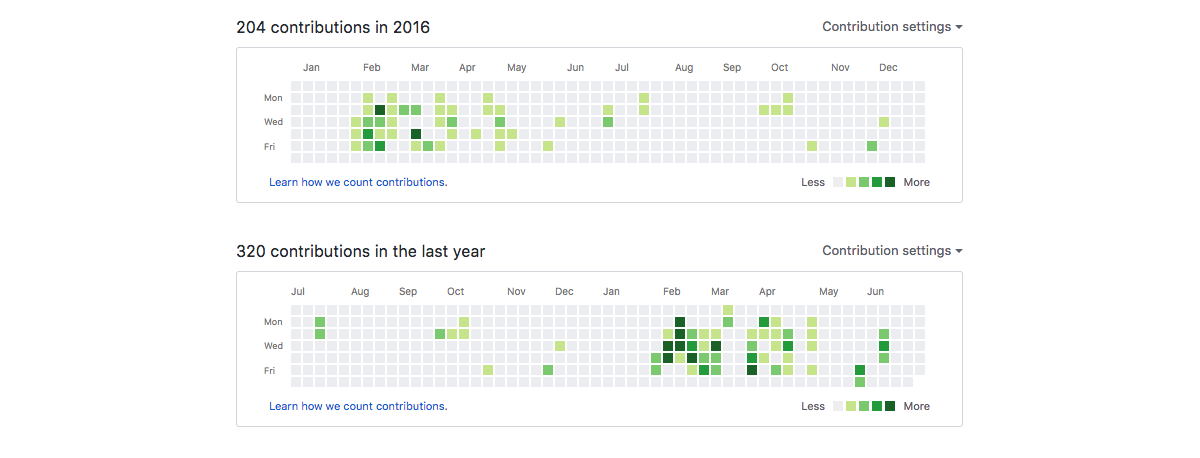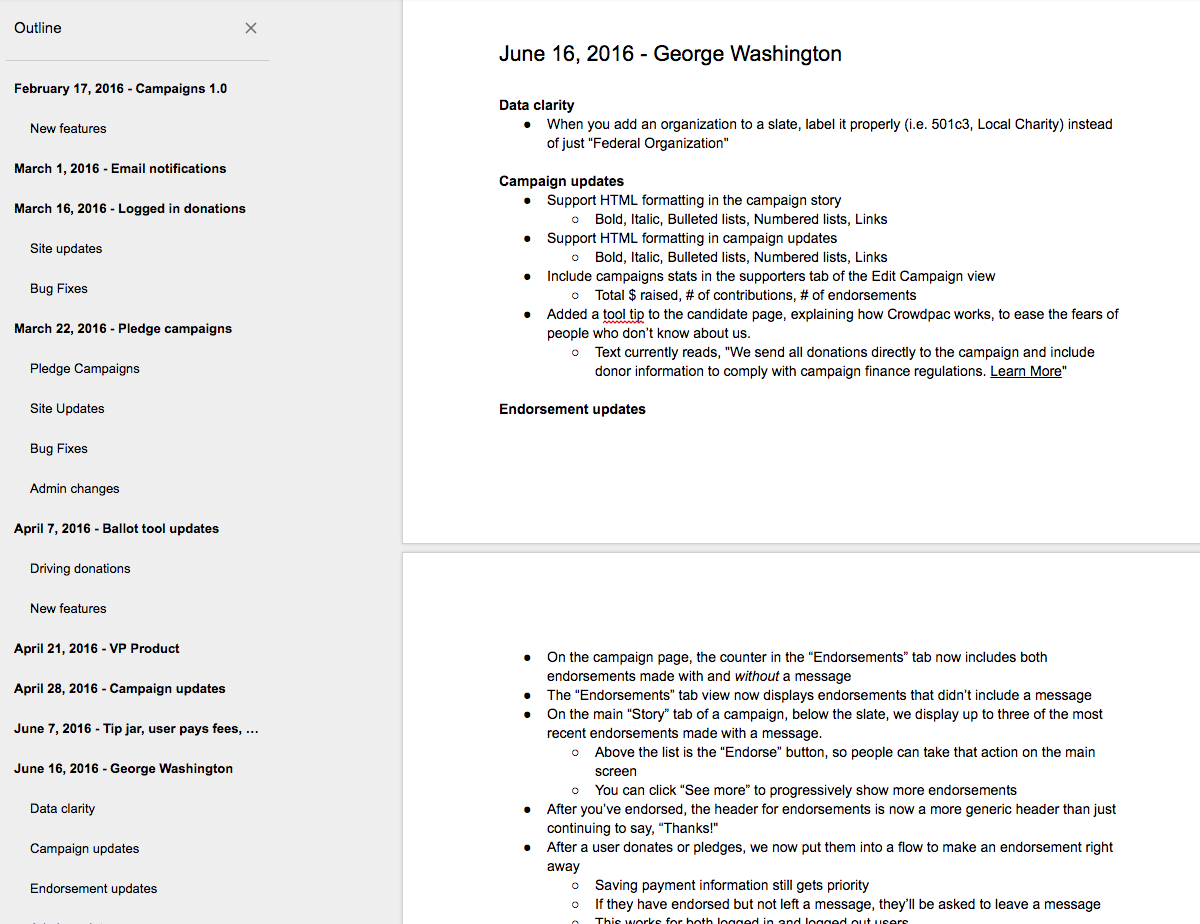Crowdpac Campaigns
Crowdpac's mission is to reduce the influence of big money in politics, and the best way to do that is by diversifying a candidate’s donor base through small dollar contributions. In order to make that accessible to everyone, we designed and built the first crowdfunding platform exclusively for politics. Our platform enables candidates up and down the ballot to raise funds quickly from a larger pool of donors, and build an ongoing relationship with them.
We wanted to provide a tool that was easy for novices but powerful enough for experts. Much of our competition was built with the consultant class in mind, experts who knew what they were doing. In order to deliver on our mission through the product, we needed to build an approachable yet flexible interface.
Another key challenge was abstracting away structural complexities. We aren’t a payment provider - we partner with a vendor for that. There were structures defined by our partner that we had to adhere to in order to stay within campaign finance law, but that had to be represented in our products. We also implemented a moderation and approval system, resulting in many different states of a campaign.
- Product strategy
- User research
- UX Design
- UI design
- Front-end engineering
- Product management
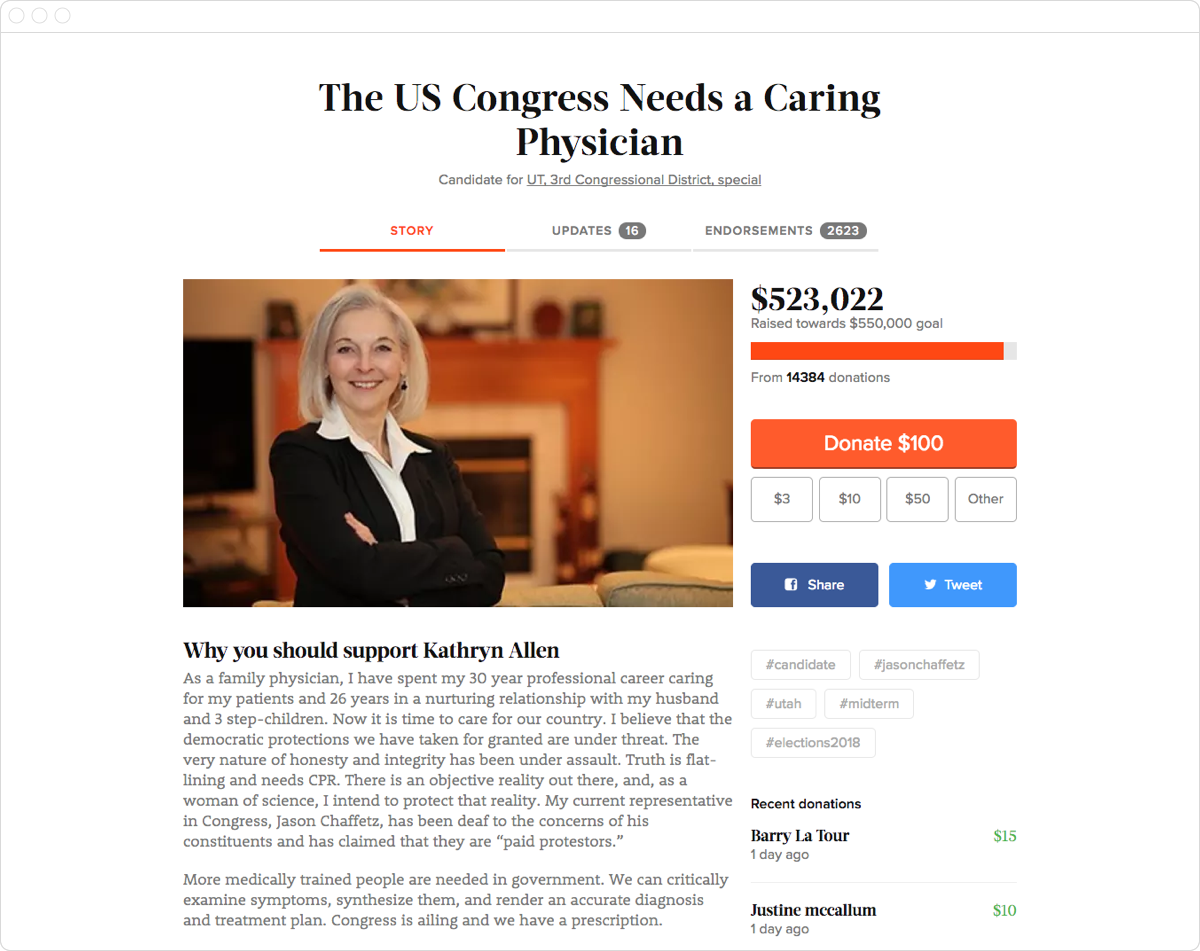
Early on, we identified financial uncertainty as the major issue preventing new people from running for office who are otherwise qualified. To alleviate that uncertainty, version 1.0 of our platform enabled candidates to raise conditional pledges that only convert into actual donations if you file to run. If you never run, the pledges are canceled and nobody is charged. This was a breakthrough innovation that resulted in nearly 1,000 outsider candidates running for the first time, largely from underrepresented populations.
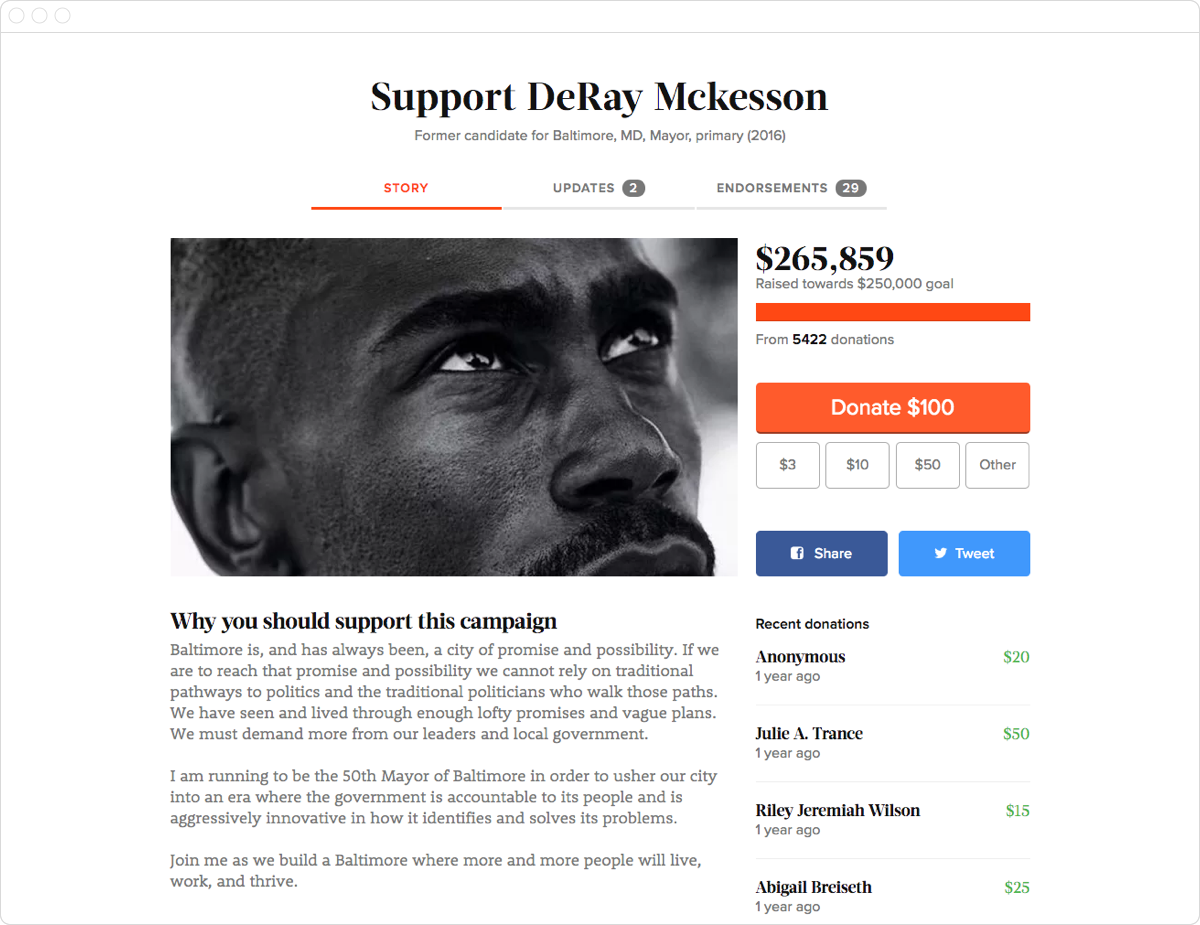
Candidates vs. Campaigns
In transitioning from a content site to a crowdfunding platform, there were a number of challenges in figuring out how to slot in the new flows and behaviors into the existing site. Alongside the engineering team, we identified all of the possible states and how the interface would adapt. The key mechanic here is our “Candidate page” vs. a “Campaign page” and when a user would be directed to one or the other.
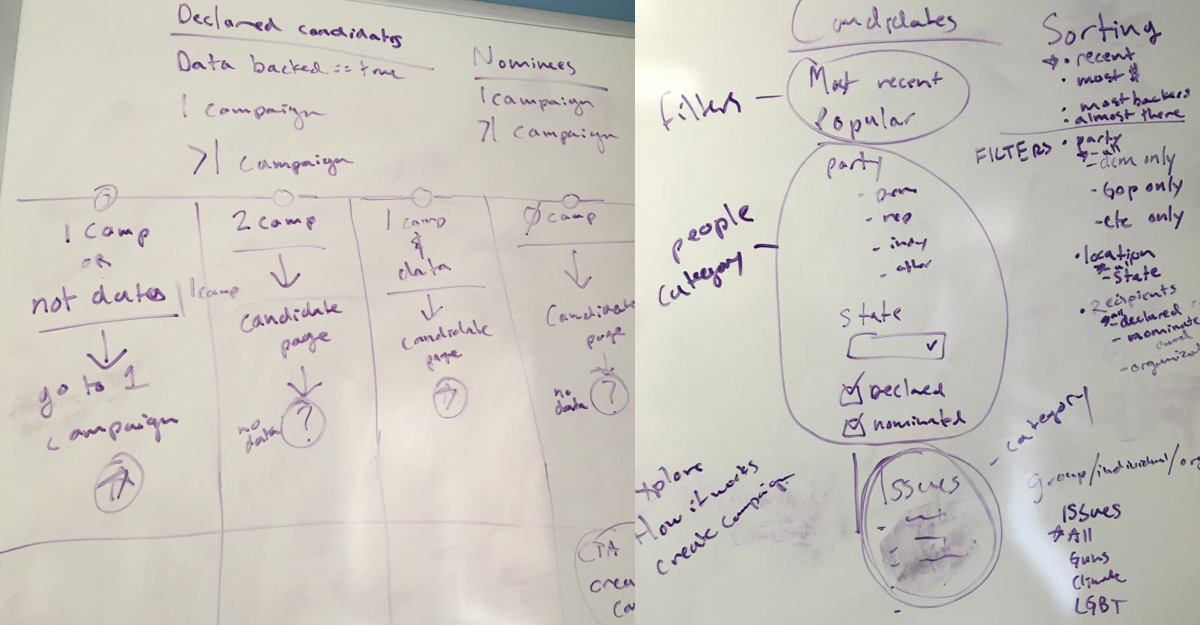
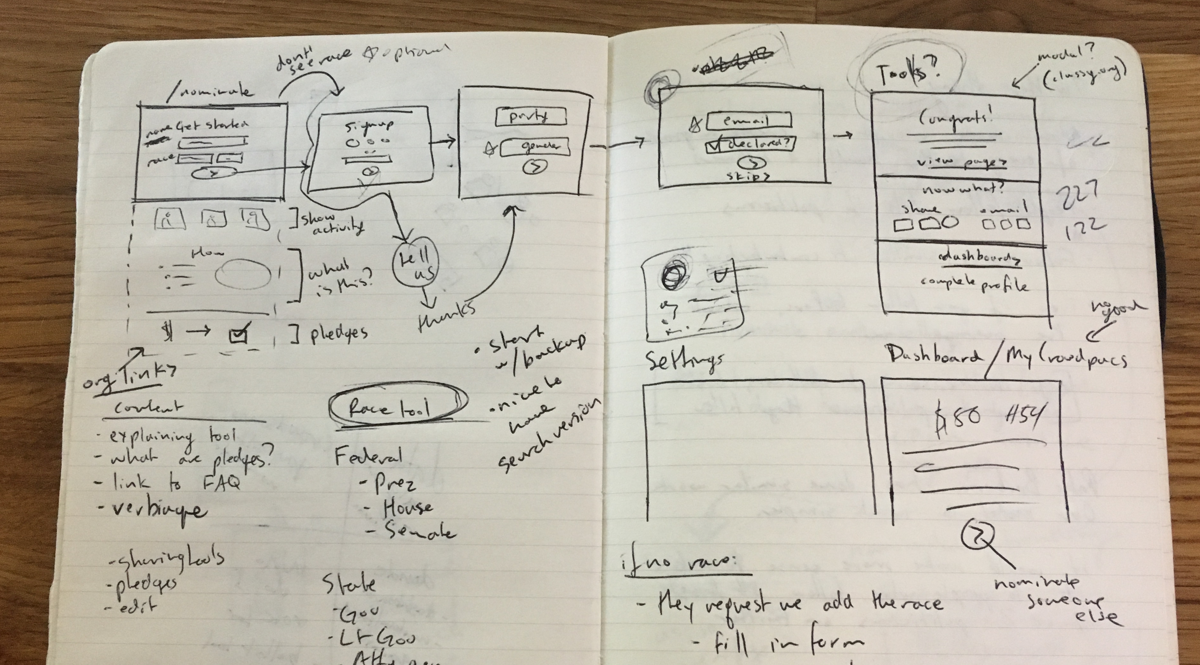
Creation flow
Just like any marketplace, both sides are equally important. So while we spend countless hours on improving our donor experience, we do the same for our campaign creators. We’ve iterated constantly to simplify the flows while reducing errors rates and customer service inquiries.
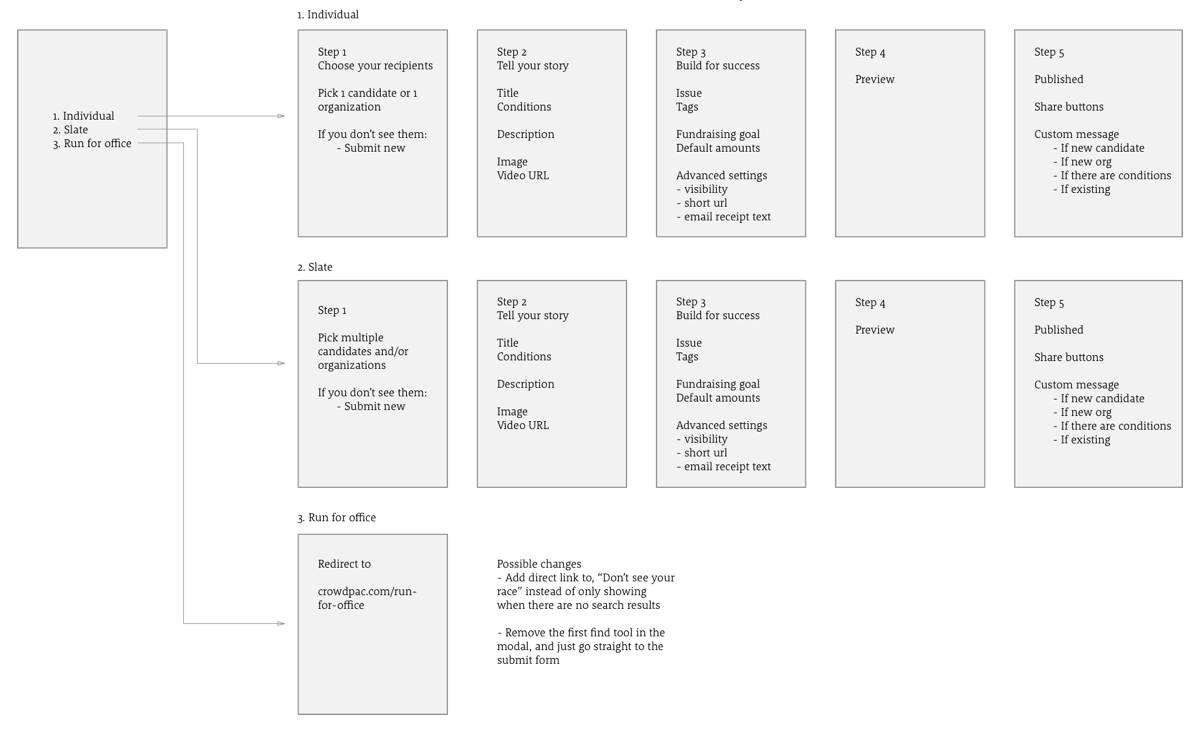
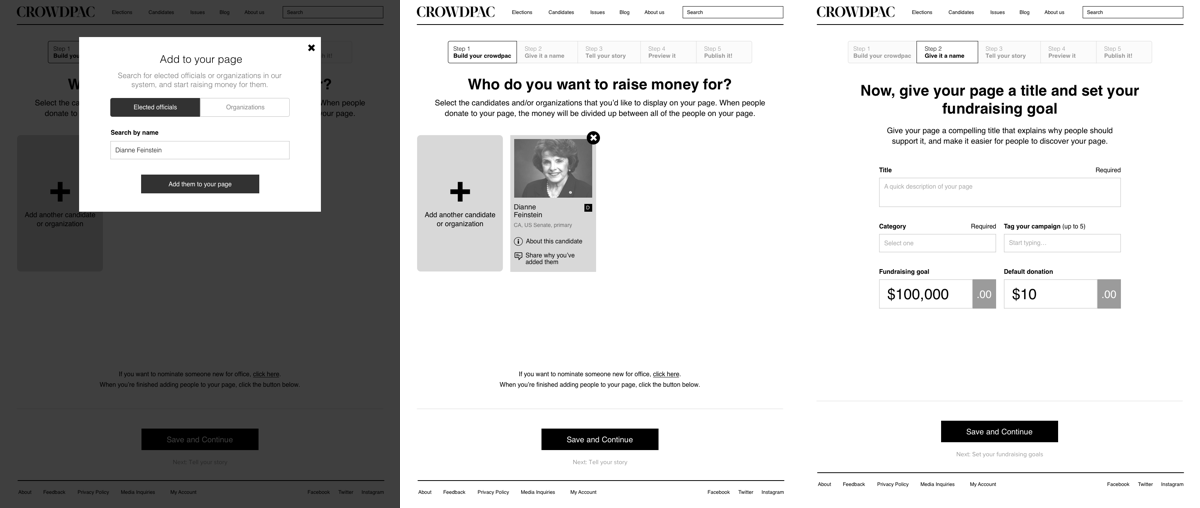
Our initial launch, while supporting four creation flows (individual, group, conditional, run for office), represented the top of the funnel with a single “Create a campaign” button. In speaking with our customers, it became clear that we were masking that complexity in a way that made things more confusing. To address this we created a new screen at the start of the creation flow literally representing and describing each option along with pricing details. The result was a higher campaign completion rate, even though we added an extra step.
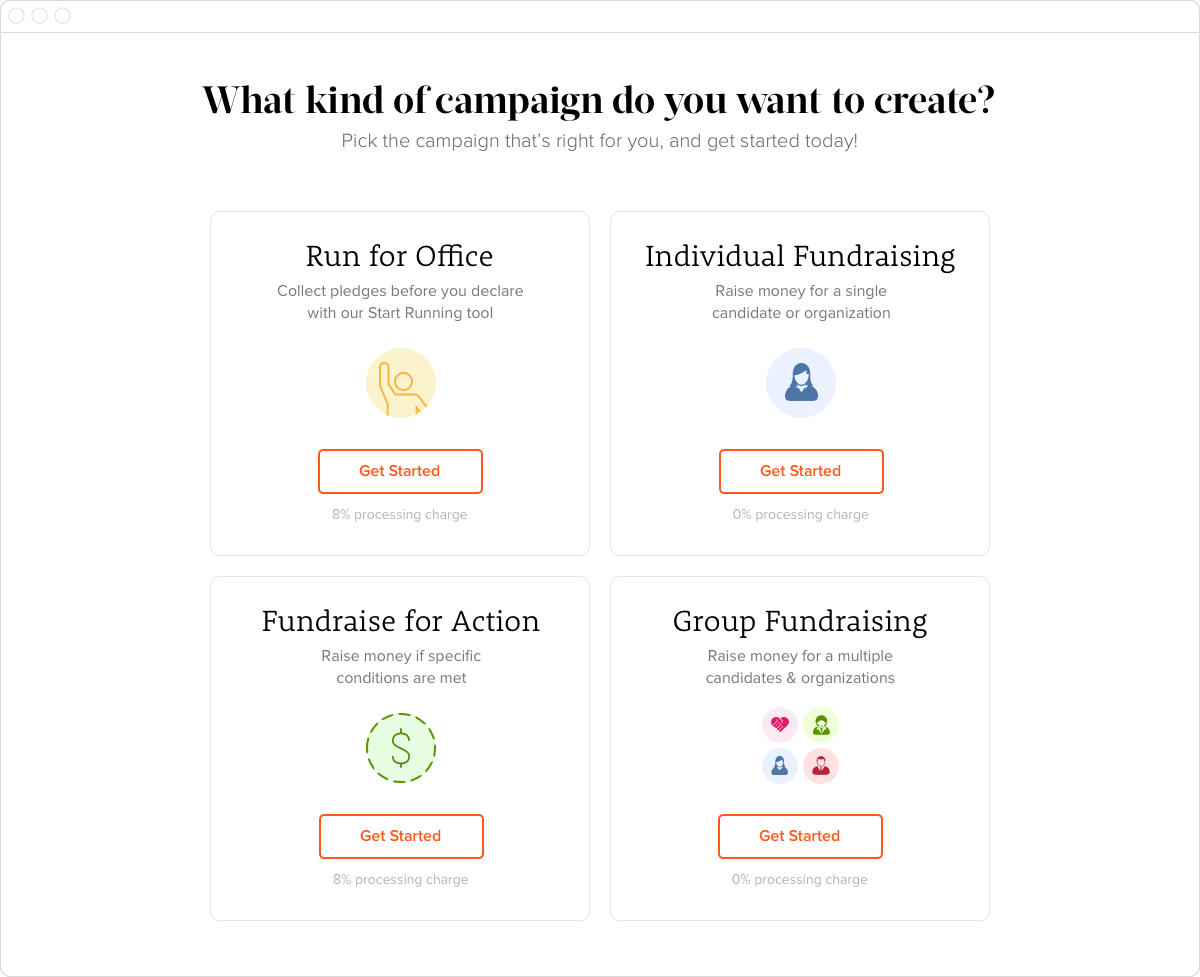
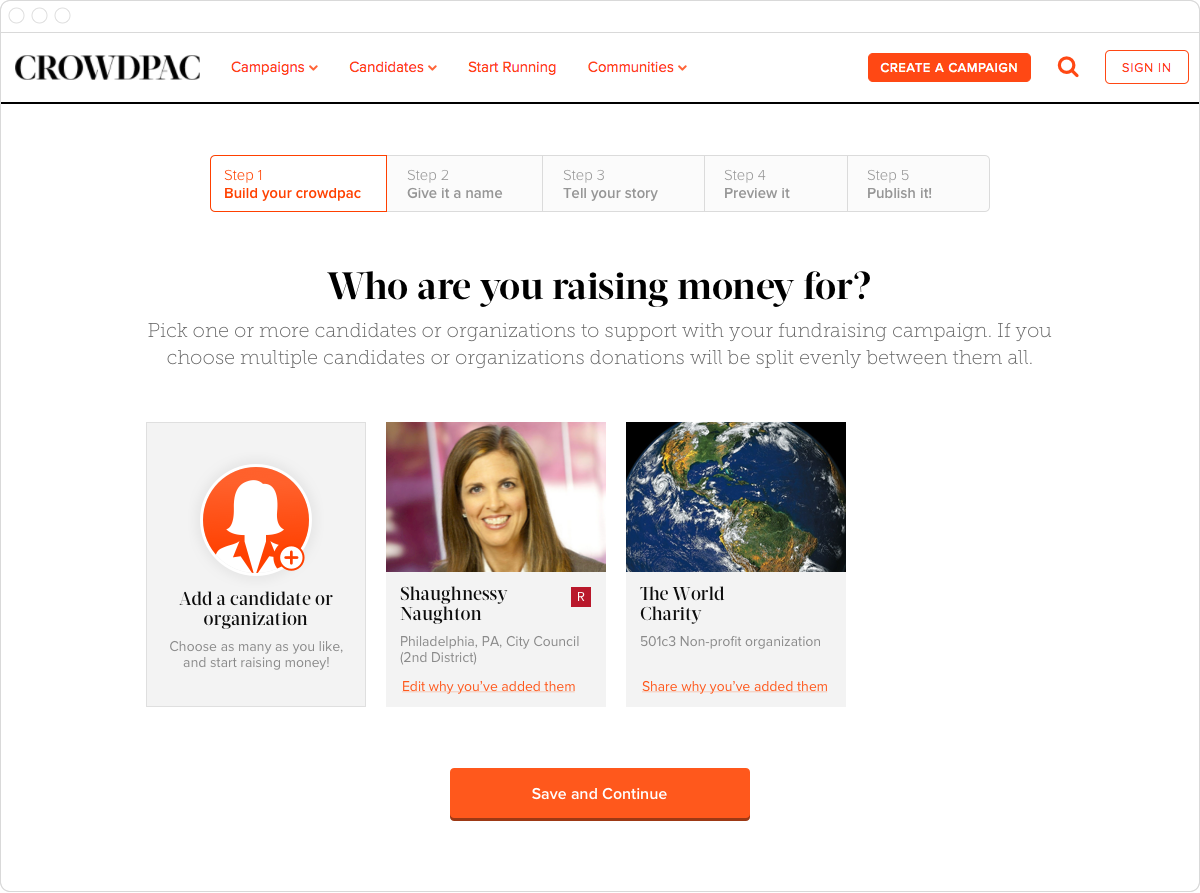
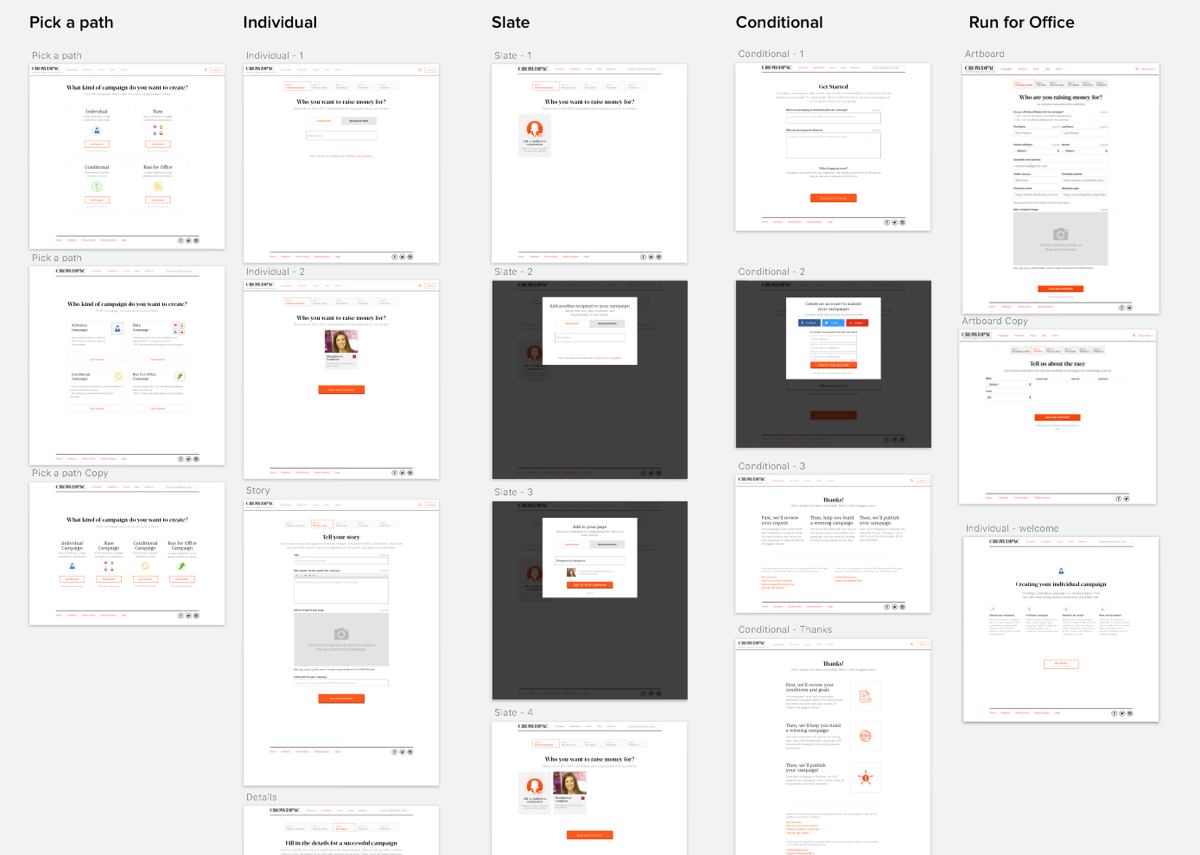
Ensuring campaign success
Similar to how the donation is only the beginning of a donor’s journey, the publishing of their campaign is only the beginning for the creator. Based on interviews and data analysis, we designed a module to help guide creators towards making their campaigns successful by encouraging them to reach important milestones and engage with their supporters.
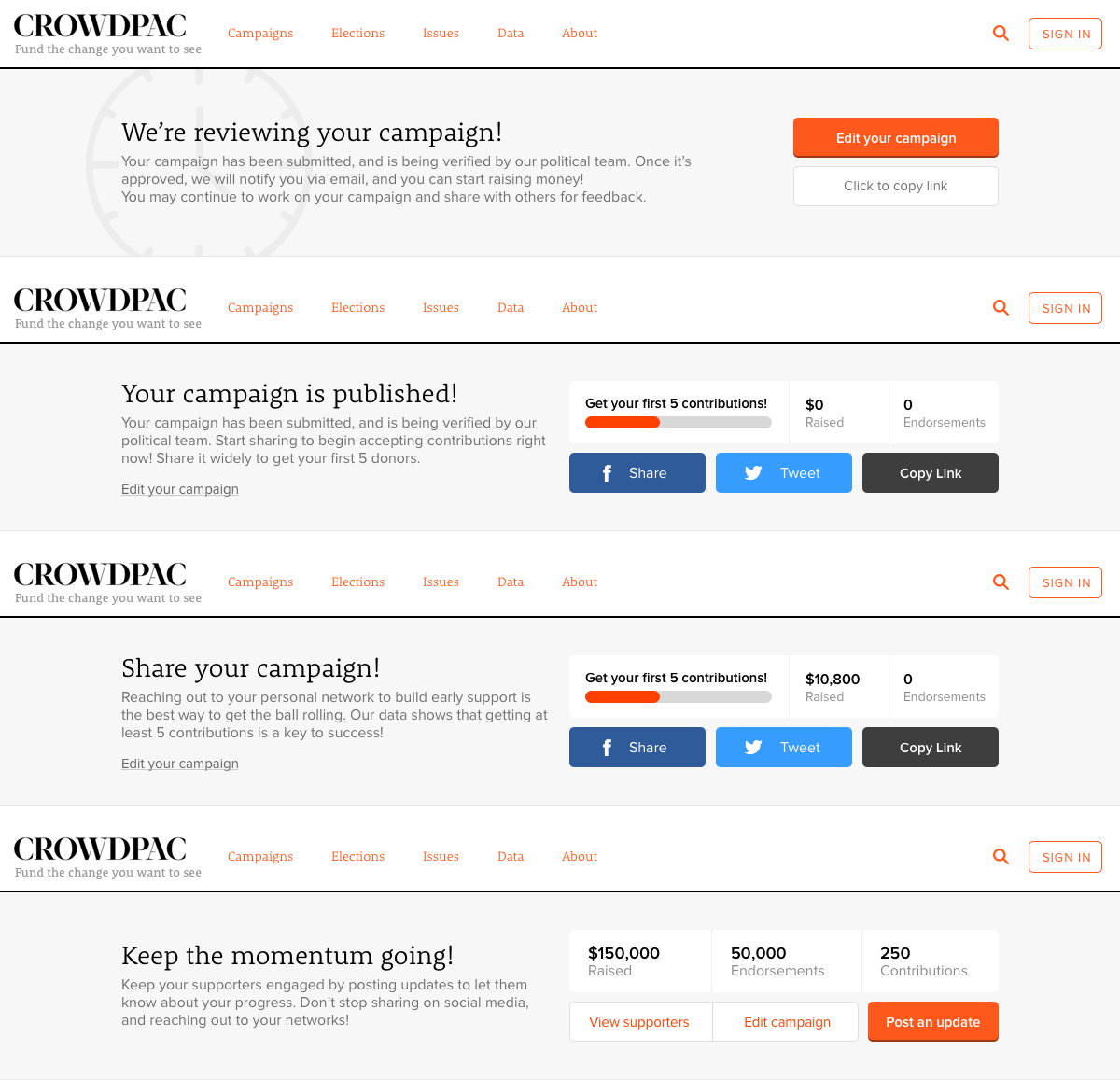
Core donation experience
Central to the platform is an optimized, fast, frictionless donation experience. We’re constantly iterating on this flow to ensure that we’re doing right by our donors and creators. We launched with a basic form and over time added increasingly powerful features like recurring donations, saved payment methods, optional tipping, and responsive layouts.
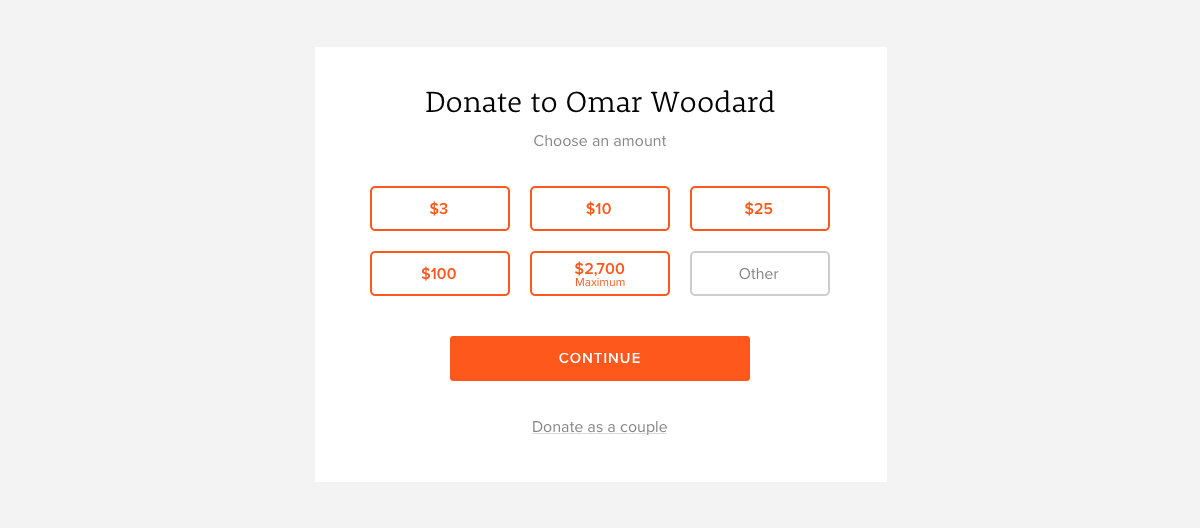
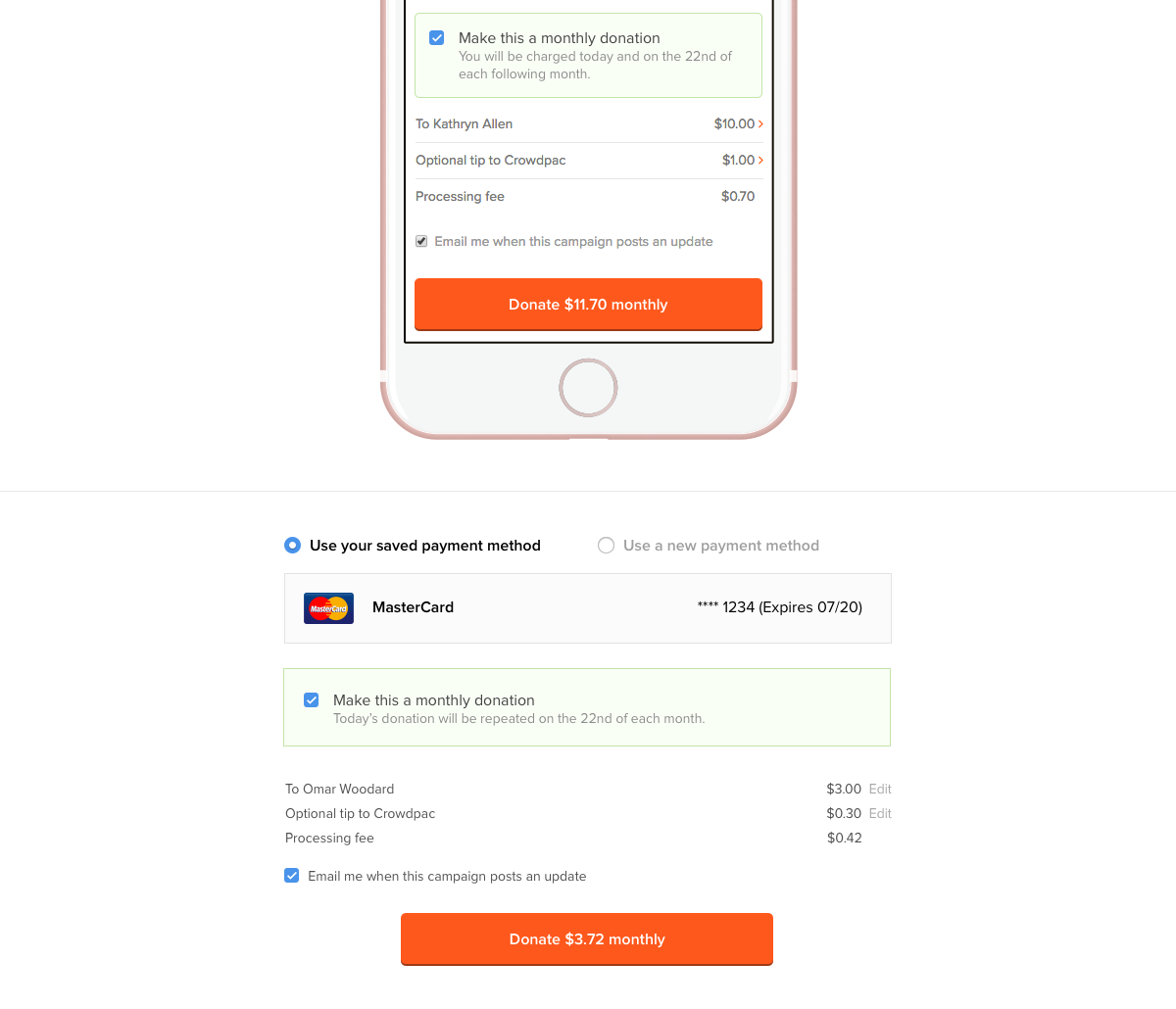
Tip-based revenue model
Several months into our initial launch, based on customer interviews and industry experience, we decided to modify our revenue model from a fixed percentage to an optional tip for donations. To make sure we executed this in the simplest way possible while maintaining our revenue projections, I led a prototyping effort to get the UI just right.
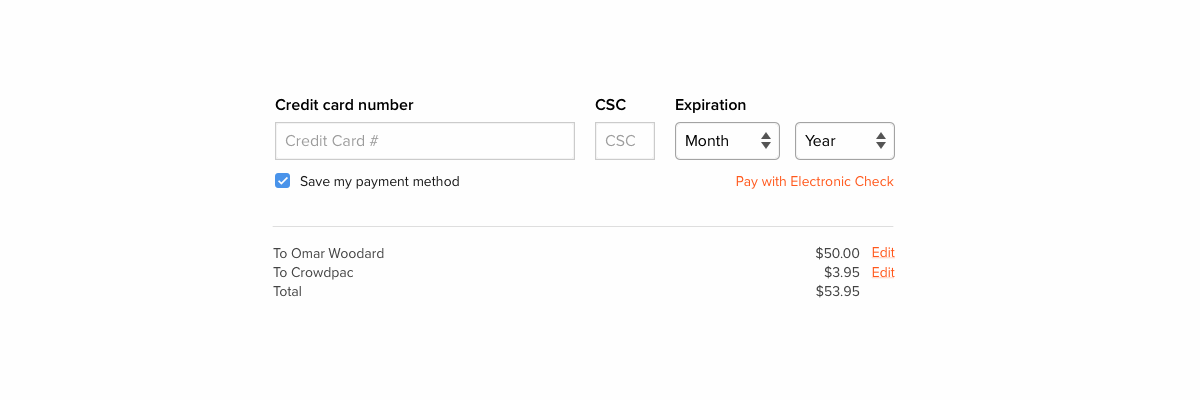
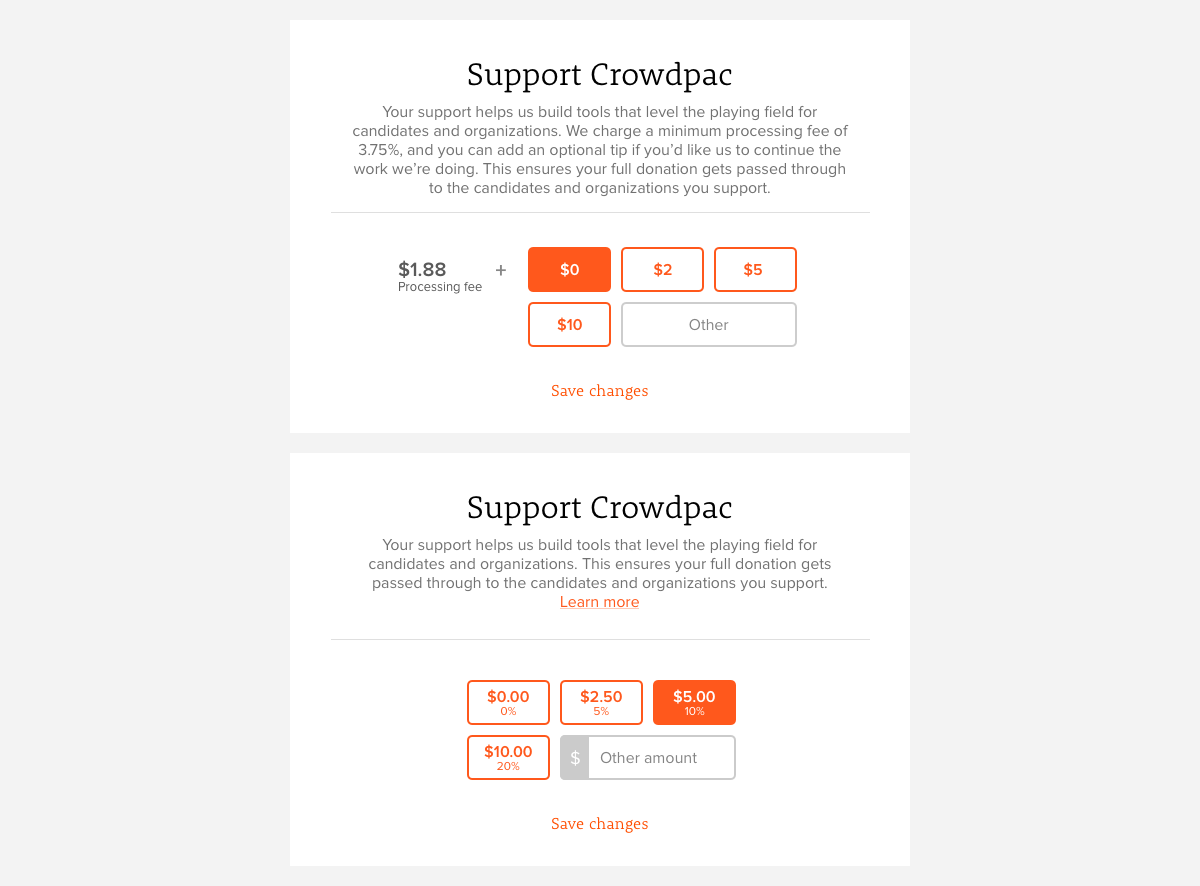
Post-donation experience
Because we’re trying to foster a healthier relationship between candidates and donors, the initial transaction is just the starting point. After that is where we help level them up into a full participant of the platform. Our KPIs here are accounts created, saved payment methods, endorsements made, and social sharing.
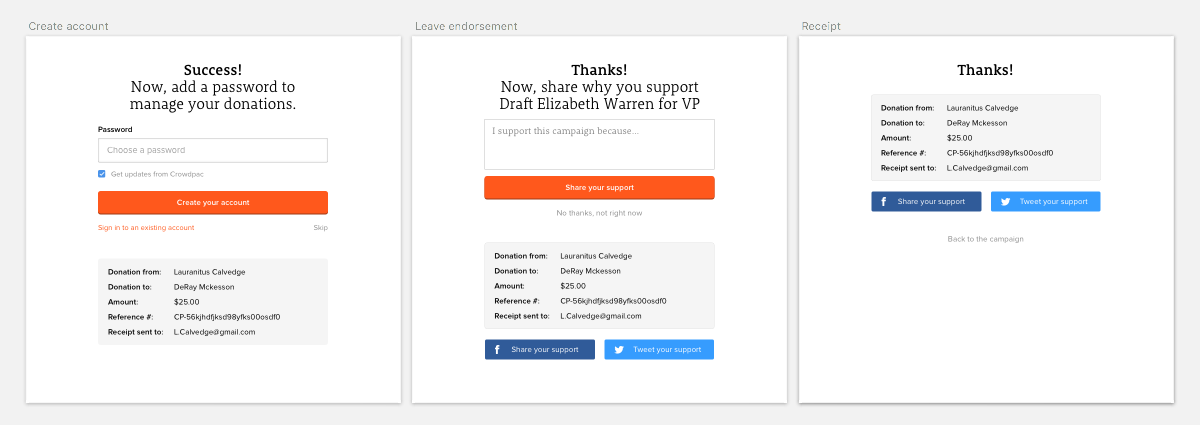
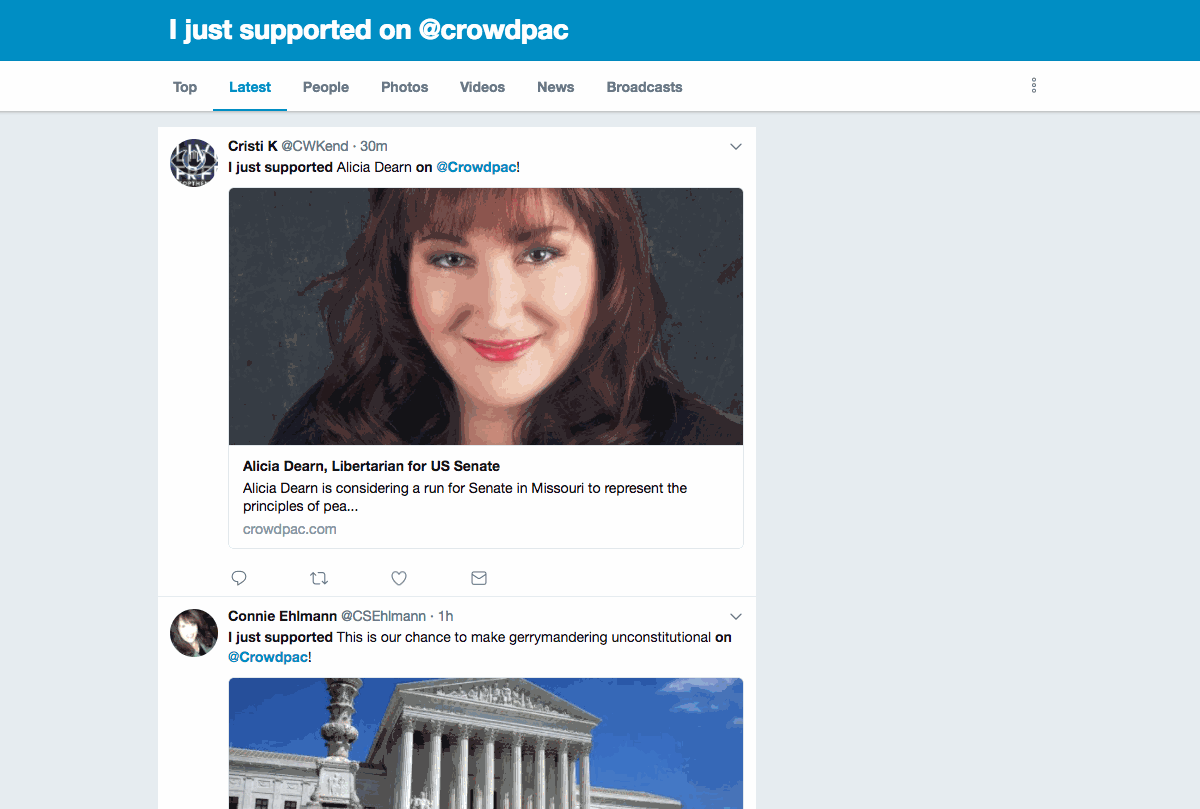
Managing your campaign
Building a crowdfunding platform for politics is uniquely challenging due to the financial regulations involved, and it’s something we took very seriously. We made sure to provide all of the tools necessary to stay within the bounds of the law, while also having the control necessary to tell your story effectively and run a successful crowdfunding campaign.
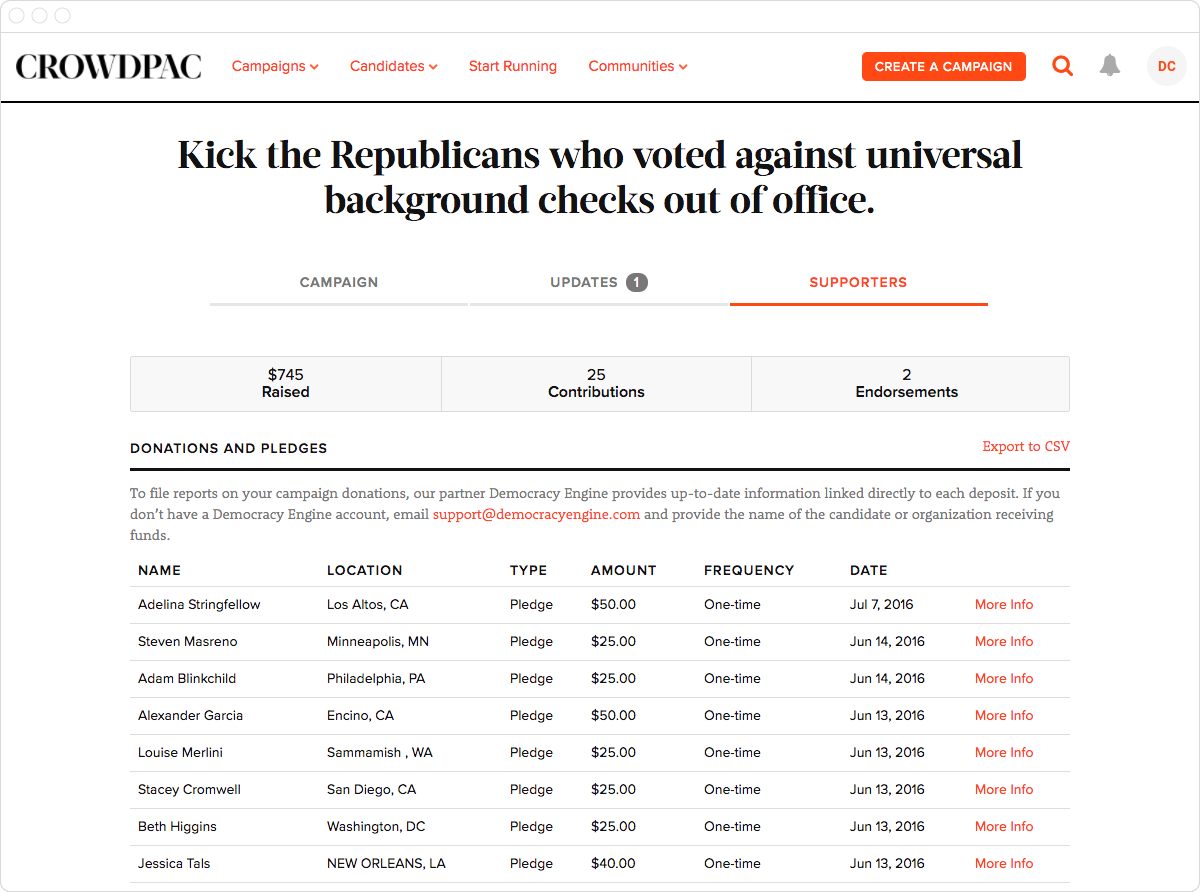
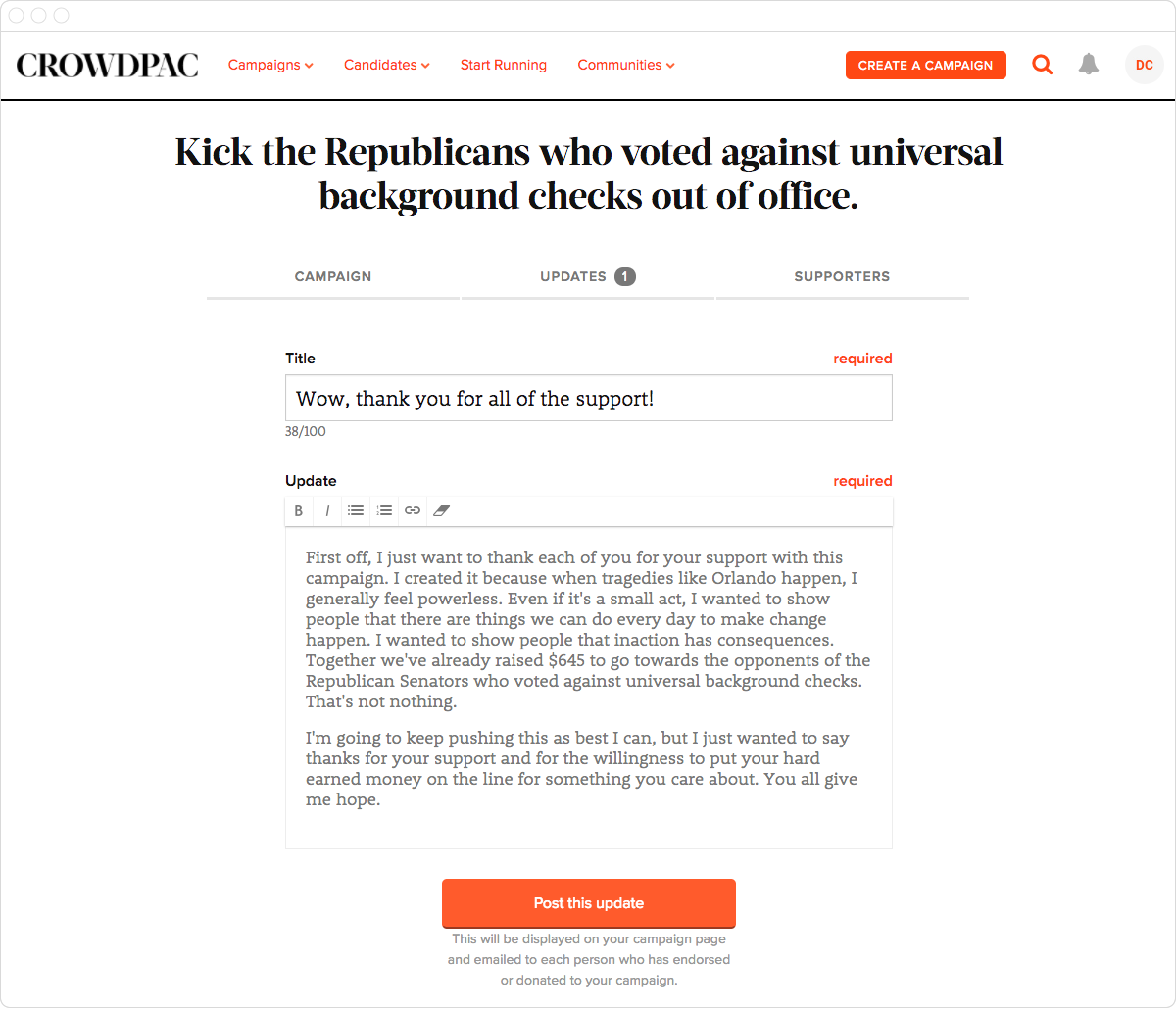
Connecting with donors
As the sole designer for our entire platform, my responsibilities didn’t end with just the product. It naturally extended into the marketing design of our website, defining and shaping our visual brand standards, and our various user acquisition efforts around topical political events.
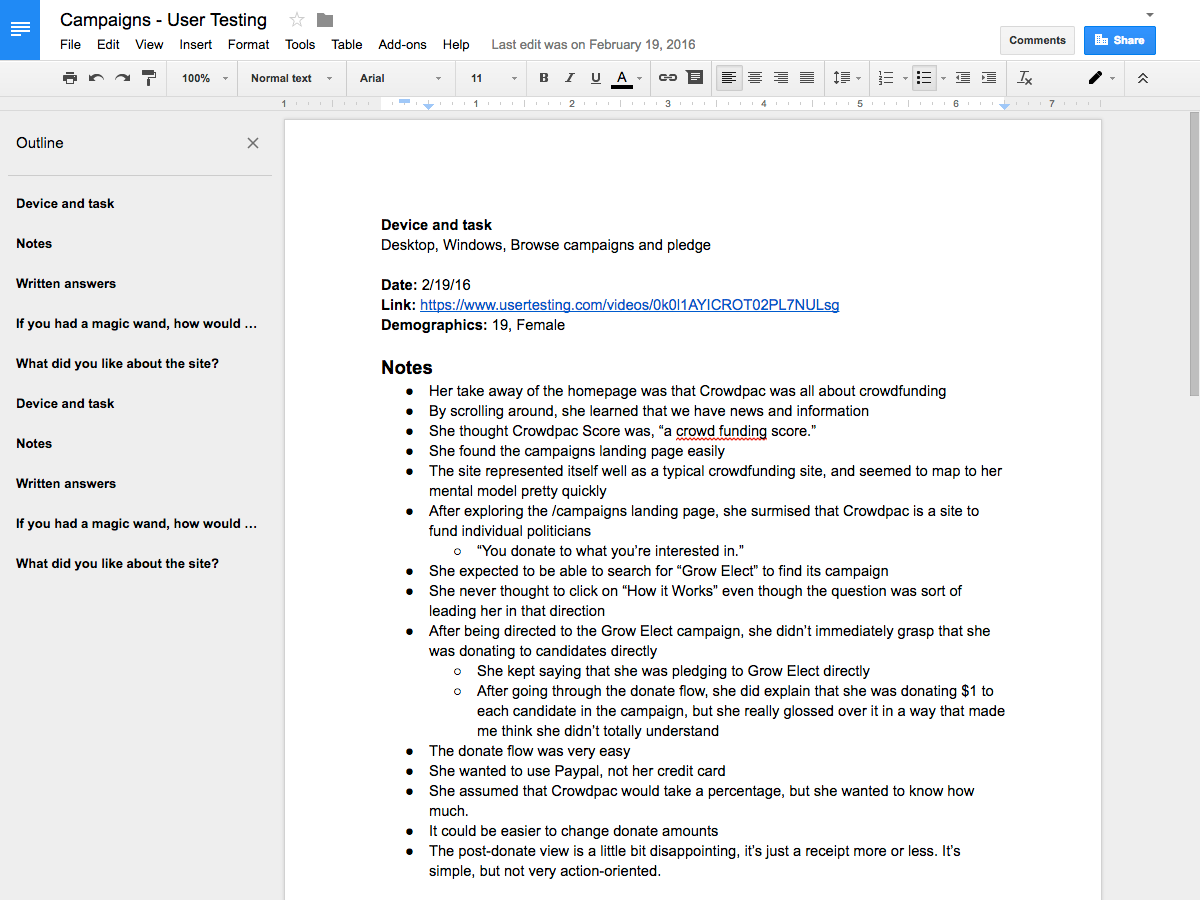

Contribute, communicate, iterate
I love building products because it is a holistic practice. I think the best products come to life when it’s a collaborative effort, and I made every attempt to embody that with our engineering team. As with any startup, I was required to wear many hats. There were months where I’d be working exclusively in Sublime Edit writing HTML and CSS, managing our product roadmap, leading the QA process, or writing our internal release notes. I truly enjoy all of it.
